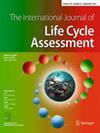吉格列汀可减轻MC3T3-E1成骨细胞中还原糖诱导的氧化损伤并改善成骨细胞分化
IF 5.4
3区 环境科学与生态学
Q2 ENGINEERING, ENVIRONMENTAL
引用次数: 0
摘要
目的:二肽基肽酶-4 (DPP-4)抑制剂已被证明可以降低骨折的发生率。一种新开发的降糖药,吉格列汀,可以改善骨骼质量。我们研究了吉格列汀对2-脱氧-d -核糖(dRib)诱导的MC3T3-E1成骨细胞氧化损伤和细胞功能障碍的影响。方法:在存在或不存在格列汀的情况下,用强还原糖dRib处理成骨细胞。采用CCK-8法测定细胞活力。随后检测细胞凋亡和活性氧(ROS)的产生。通过RT-PCR检测吉格列汀对成骨细胞分化相关基因表达的影响。结果:我们观察到dRib降低了细胞存活率,显著增加了细胞凋亡和细胞内ROS水平。然而,用吉格列汀预处理部分减弱了这些drib诱导的效应。此外,用吉格列汀治疗增加碱性磷酸酶(ALP)活性和胶原蛋白的产生。吉格列汀增加骨相关标志物ALP、胶原、骨钙素、OPN、BMP2和BMP7的表达。吉格列汀治疗后,PI3K表达水平升高。结论:综上所述,这些结果表明,吉格列汀可以减轻drib诱导的成骨细胞损伤。吉格列汀可以改善骨骼的氧化条件。ALP活性的增加和成骨细胞分化相关基因的表达增加表明,吉格列汀治疗可以改善骨形成质量。我们的研究结果表明,吉格列汀治疗通过PI3K/AKT/BMP轴有效地减少氧化应激和提高骨强度。本文章由计算机程序翻译,如有差异,请以英文原文为准。
Gemigliptin attenuates reducing sugar-induced oxidative damage in
MC3T3-E1 osteoblasts and improves osteoblastic differentiation
Objective: Dipeptidyl peptidase-4 (DPP-4) inhibitors have been shown to reduce the rate of bone fractures. A newly developed antidiabetic drug, gemigliptin, may improve bone quality. We investigated the effects of gemigliptin on 2-deoxy-D-ribose (dRib)-induced oxidative damage and cellular dysfunction in the MC3T3-E1 osteoblastic cell line. Methods: Osteoblasts were treated with dRib, a strong reducing sugar, in the presence or absence of gemigliptin. Cell viability was evaluated using the CCK-8 assay. Apoptosis and reactive oxygen species (ROS) production were subsequently examined. The effects of gemigliptin on the expression of genes related to osteoblastic differentiation were determined via RT-PCR. Results: We observed that dRib reduced cell survival and markedly increased apoptosis and intracellular levels of ROS. However, pre-treatment with gemigliptin partially attenuated these dRib-induced effects. Additionally, treatment with gemigliptin increased alkaline phosphatase (ALP) activity and collagen production. Gemigliptin increased the expression of the bone-related markers ALP, collagen, osteocalcin, OPN, BMP2 and BMP7. The expression level of PI3K was increased after gemigliptin treatment under dRib condition. Conclusion: Taken together, these results suggest that gemigliptin attenuates dRib-induced cellular damage in osteoblasts. Gemigliptin may improve oxidative conditions in bone. Increased ALP activity and increased expression of genes related to osteoblastic differentiation indicate that gemigliptin treatment can improve the quality of bone formation. Our results suggest that gemigliptin treatment is effective in diminishing oxidative stress and improving bone strength through PI3K/AKT/BMP axis.
求助全文
通过发布文献求助,成功后即可免费获取论文全文。
去求助
来源期刊
CiteScore
10.60
自引率
10.40%
发文量
100
审稿时长
8-16 weeks
期刊介绍:
The International Journal of Life Cycle Assessment (Int J Life Cycle Assess) is the first journal devoted entirely to Life Cycle Assessment and closely related methods. LCA has become a recognized instrument to assess the ecological burdens and impacts throughout the consecutive and interlinked stages of a product system, from raw material acquisition or generation from natural resources, through production and use to final disposal. The Int J Life Cycle Assess is a forum for scientists developing LCA and LCM (Life Cycle Management); LCA and LCM practitioners; managers concerned with environmental aspects of products; governmental environmental agencies responsible for product quality; scientific and industrial societies involved in LCA development, and ecological institutions and bodies.

 求助内容:
求助内容: 应助结果提醒方式:
应助结果提醒方式:


